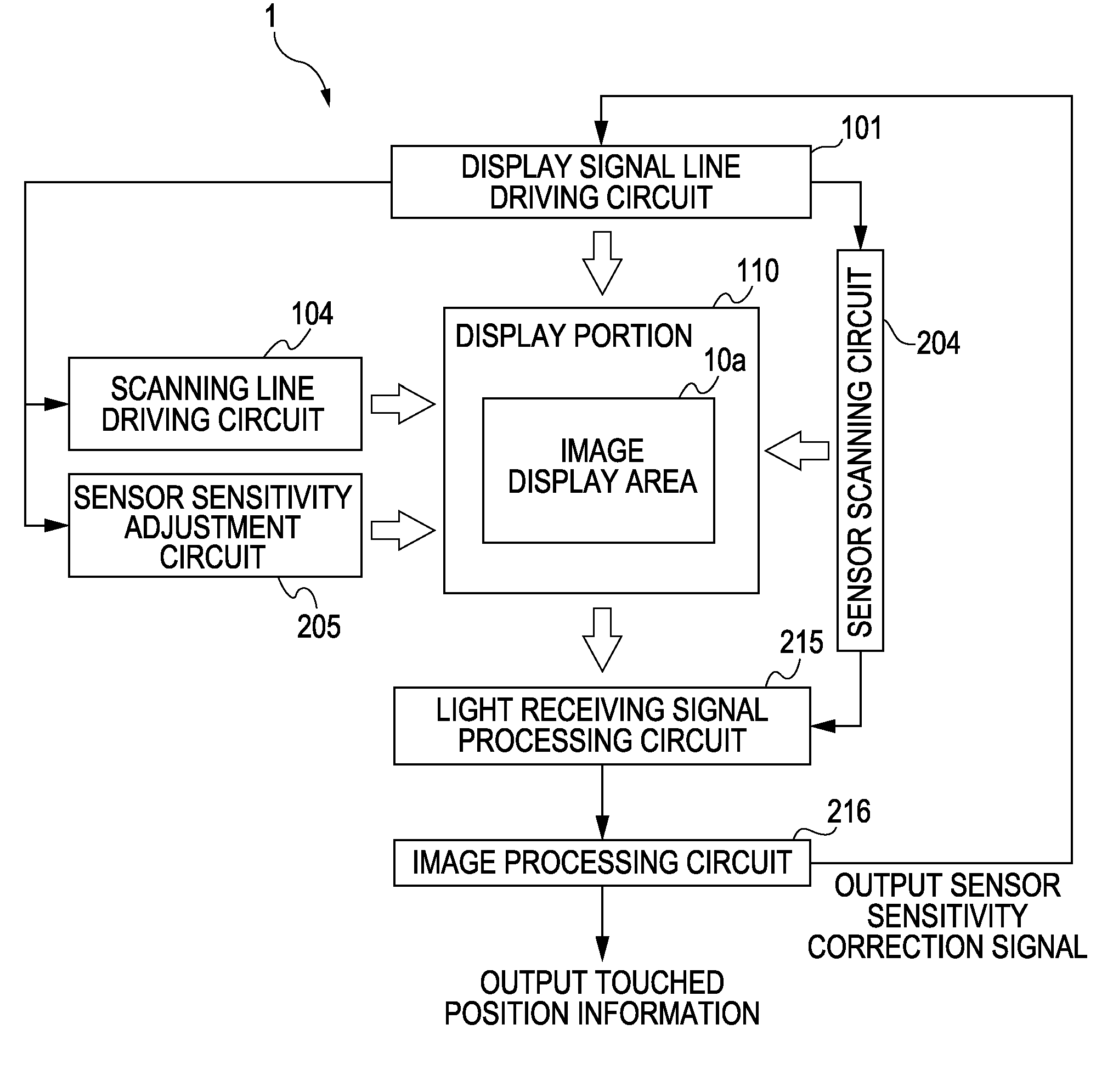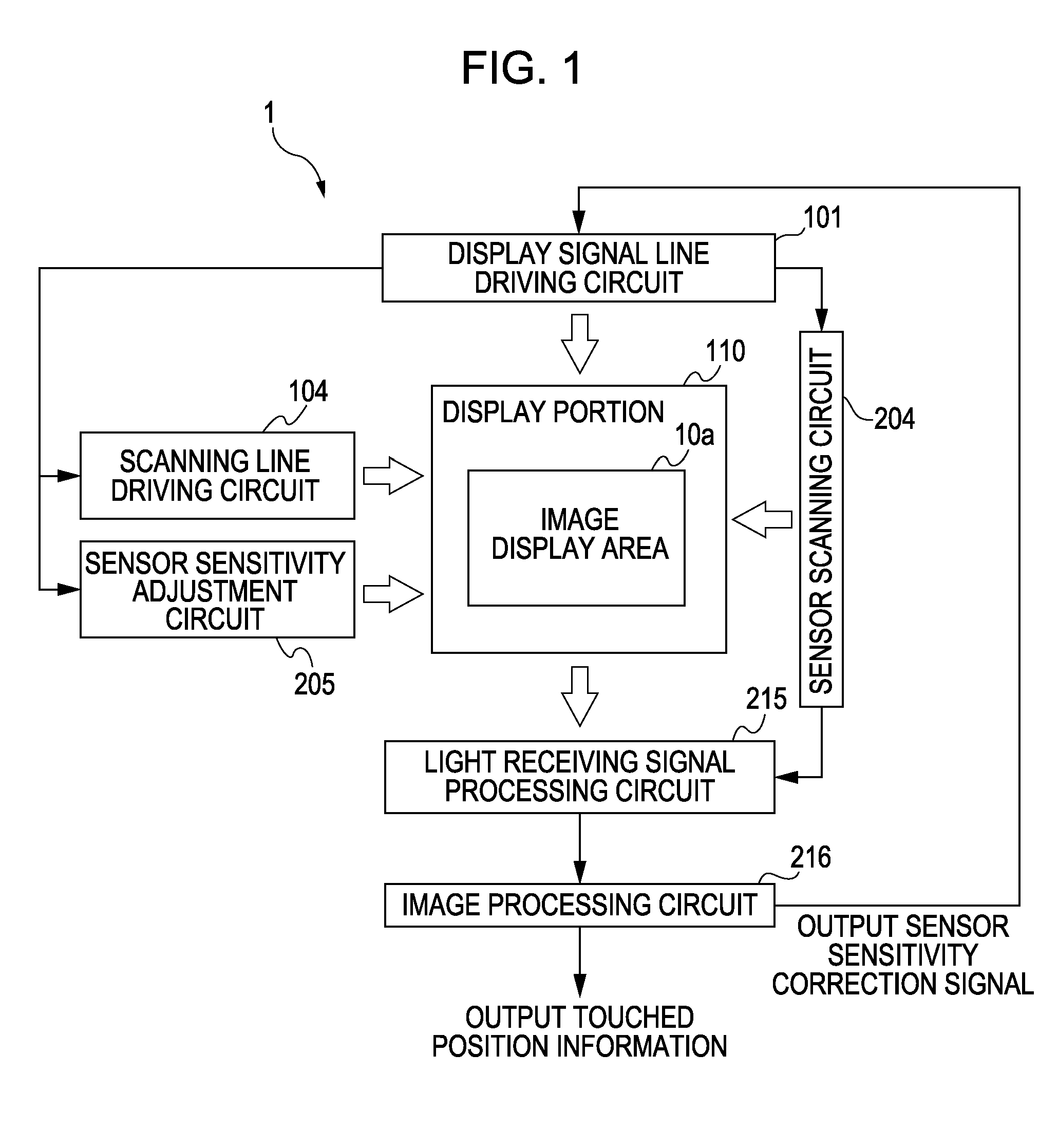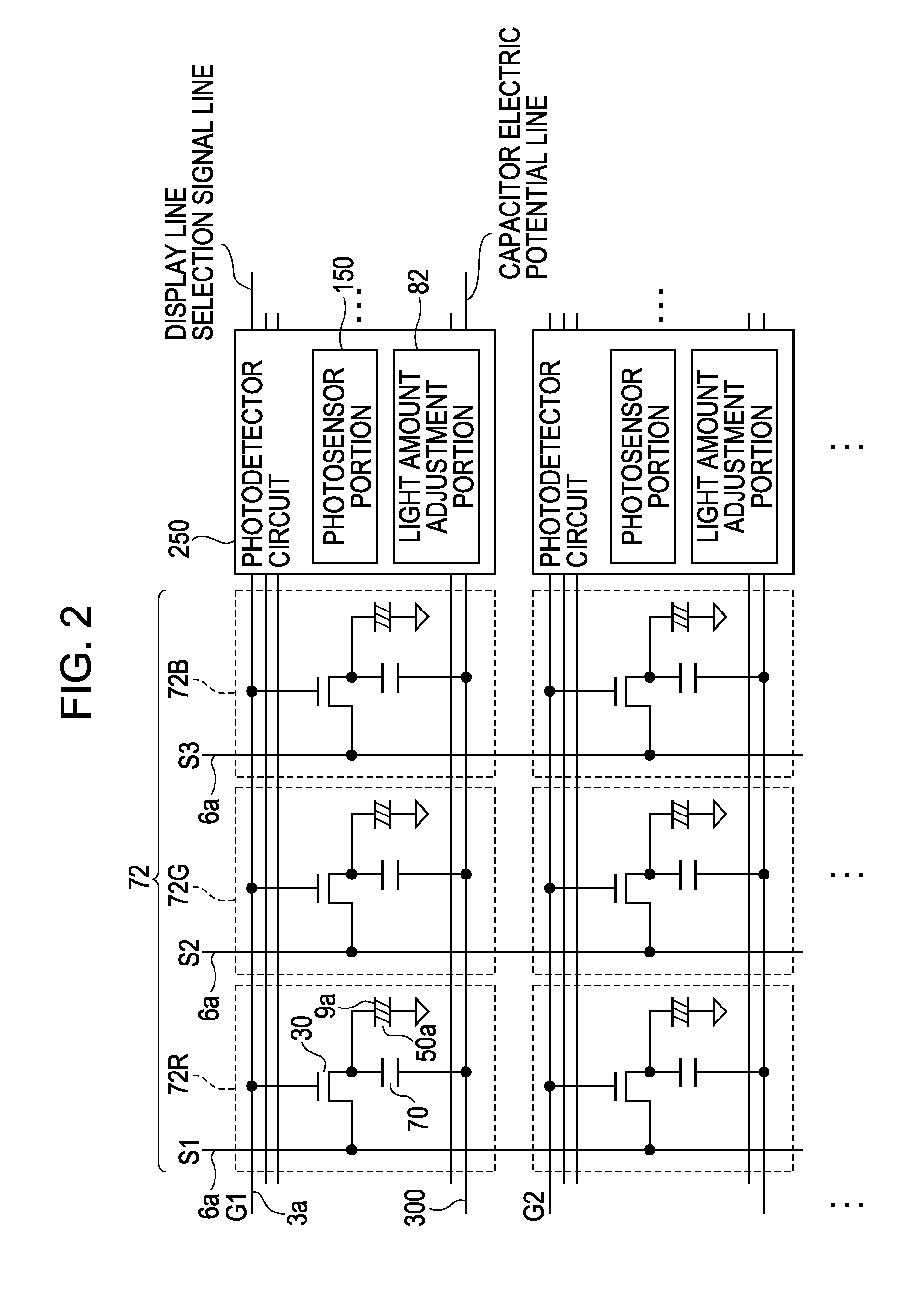Liquid crystal device
a liquid crystal device and liquid crystal technology, applied in the field of liquid crystal devices, can solve the problems of difficult to determine in which image portion of the pointing object the image portion of the pointing object is located, and the shadow of the other portion cannot be distinguished from each other, so as to reduce the aperture ratio of the display area and accurate positioning
- Summary
- Abstract
- Description
- Claims
- Application Information
AI Technical Summary
Benefits of technology
Problems solved by technology
Method used
Image
Examples
first example embodiment
2-1: First Example Embodiment
[0105]In the first example embodiment, the display line selection signal lines 3a are also used as photosensor reset signal lines, so that the photosensor reset signal lines 350 are omitted. FIG. 9 is a circuit diagram that shows the configuration of the first example embodiment. As shown in the drawing, the first example embodiment has the same configuration as that shown in FIG. 8, except that the gate of each reset TFT 163 is connected to the display line selection signal line 3a in the photosensor portion 150, and the photosensor reset signal lines 350 are omitted.
[0106]FIG. 10 is a timing chart that shows the steps of photodetection process according to the first example embodiment. Note that, in the photodetection process, two photodetections are performed, that is, a reference light receiving signal is read by resetting the photosensor portion 150 and a measurement light receiving signal is read after an exposure period (Wexp), and a difference be...
second example embodiment
2-2: Second Example Embodiment
[0116]In the second example embodiment, the display line selection signal line 3a is also used as a photosensor line selection signal line, so that the photosensor line selection signal line 353 is omitted. FIG. 14 is a circuit diagram that shows the configuration of the second example embodiment. As shown in the drawing, the second example embodiment has the same configuration as that shown in FIG. 8, except that the gate of the output control TFT 155 is connected to the display line selection signal line 3a in the photosensor portion 150, and the photosensor line selection signal line 353 is omitted.
[0117]FIG. 15 is a timing chart that shows the steps of photodetection process according to the second example embodiment. In this timing chart, a display line selection signal (photosensor line selection signal) and a photosensor reset signal are asserted to write image signals to the pixel portions 72 and reset the photosensor portion 150. After that, a ...
third example embodiment
2-3: Third Example Embodiment
[0126]FIG. 19 is a circuit diagram that shows the configuration of a third example embodiment. As shown in the drawing, in the third example embodiment, one photodetector circuit 250 is arranged for the pixel portions 72 of two lines. Then, the N-th (first, third, fifth, . . . ) display line selection signal lines 3a(N) are also used as a photosensor reset signal line and a photosensor line selection signal line a, and the (N+1)th display line selection signal lines 3a(N+1) are also used as a photosensor line selection signal line b. Thus, an output control TFT 155a and an output control TFT 155b are used as an output control TFT group 155. Note that it is not limited to the arrangement that one photodetector circuit 250 is arranged for the pixel portions 72 of two lines; however, one photodetector circuit 250 may be arranged for the pixel portions 72 of N lines (N is natural number).
[0127]Furthermore, the N-th capacitor electric potential lines 300(N) a...
PUM
| Property | Measurement | Unit |
|---|---|---|
| thickness | aaaaa | aaaaa |
| electric current | aaaaa | aaaaa |
| reset voltage | aaaaa | aaaaa |
Abstract
Description
Claims
Application Information
 Login to View More
Login to View More - R&D
- Intellectual Property
- Life Sciences
- Materials
- Tech Scout
- Unparalleled Data Quality
- Higher Quality Content
- 60% Fewer Hallucinations
Browse by: Latest US Patents, China's latest patents, Technical Efficacy Thesaurus, Application Domain, Technology Topic, Popular Technical Reports.
© 2025 PatSnap. All rights reserved.Legal|Privacy policy|Modern Slavery Act Transparency Statement|Sitemap|About US| Contact US: help@patsnap.com



